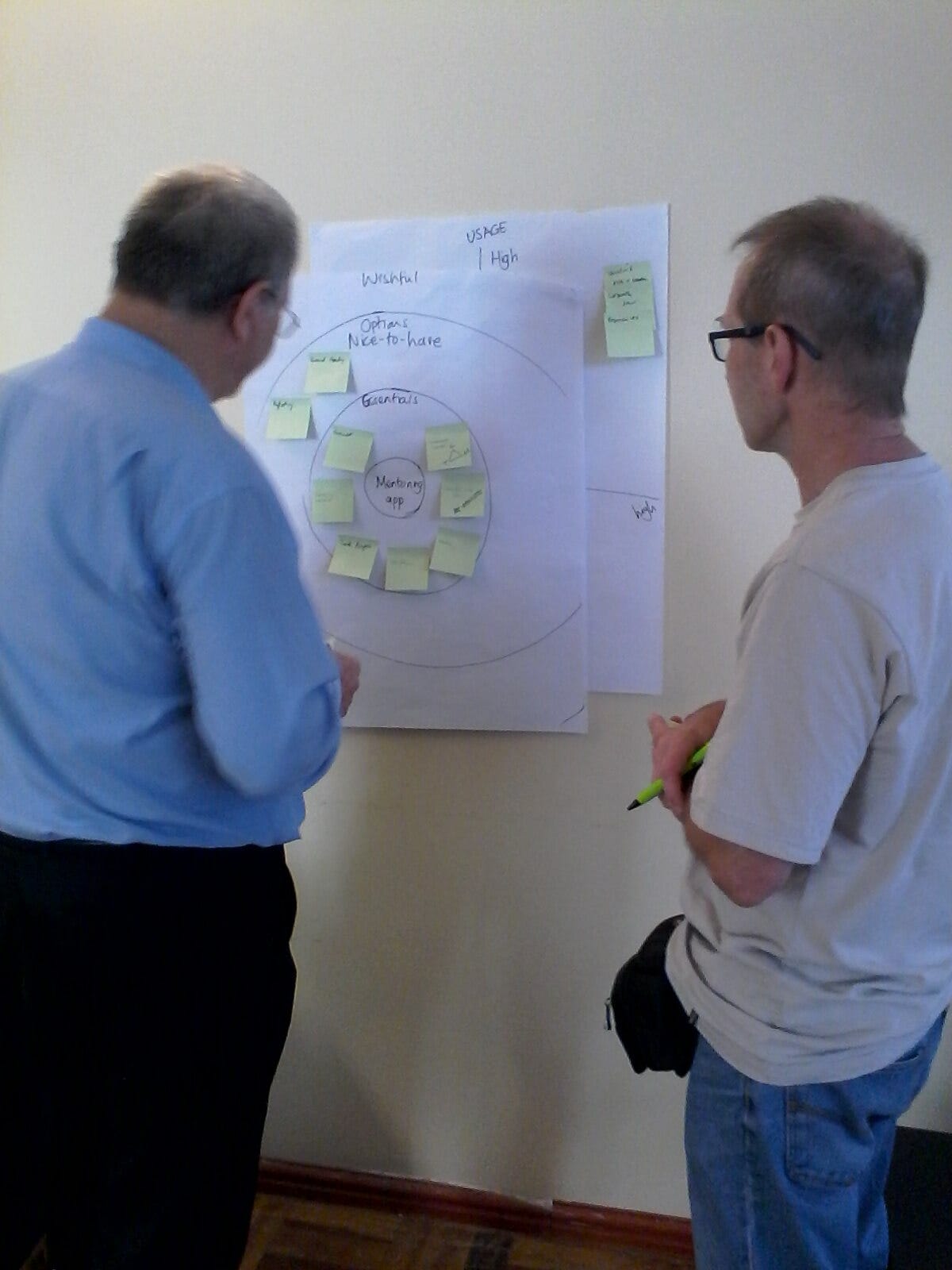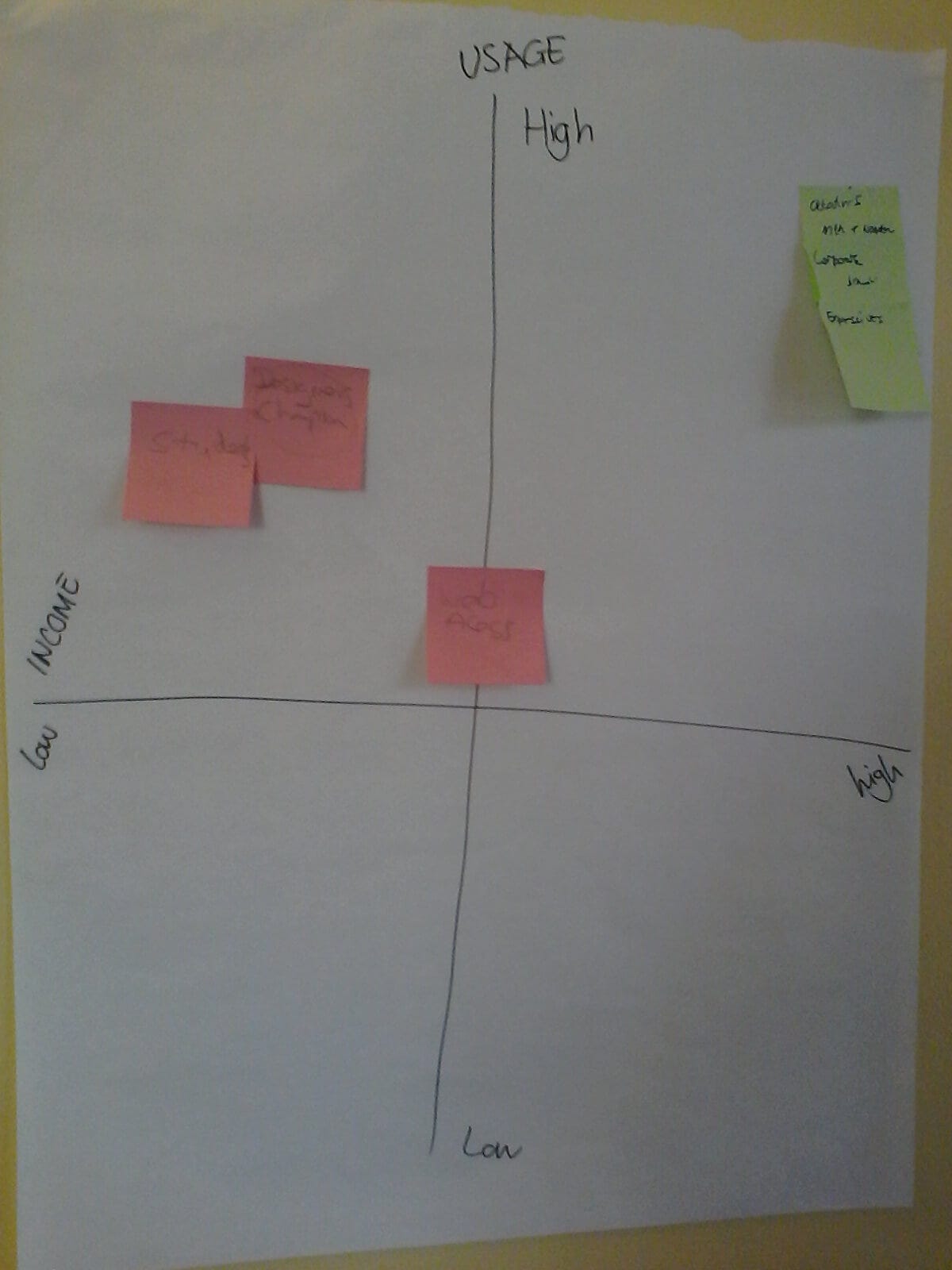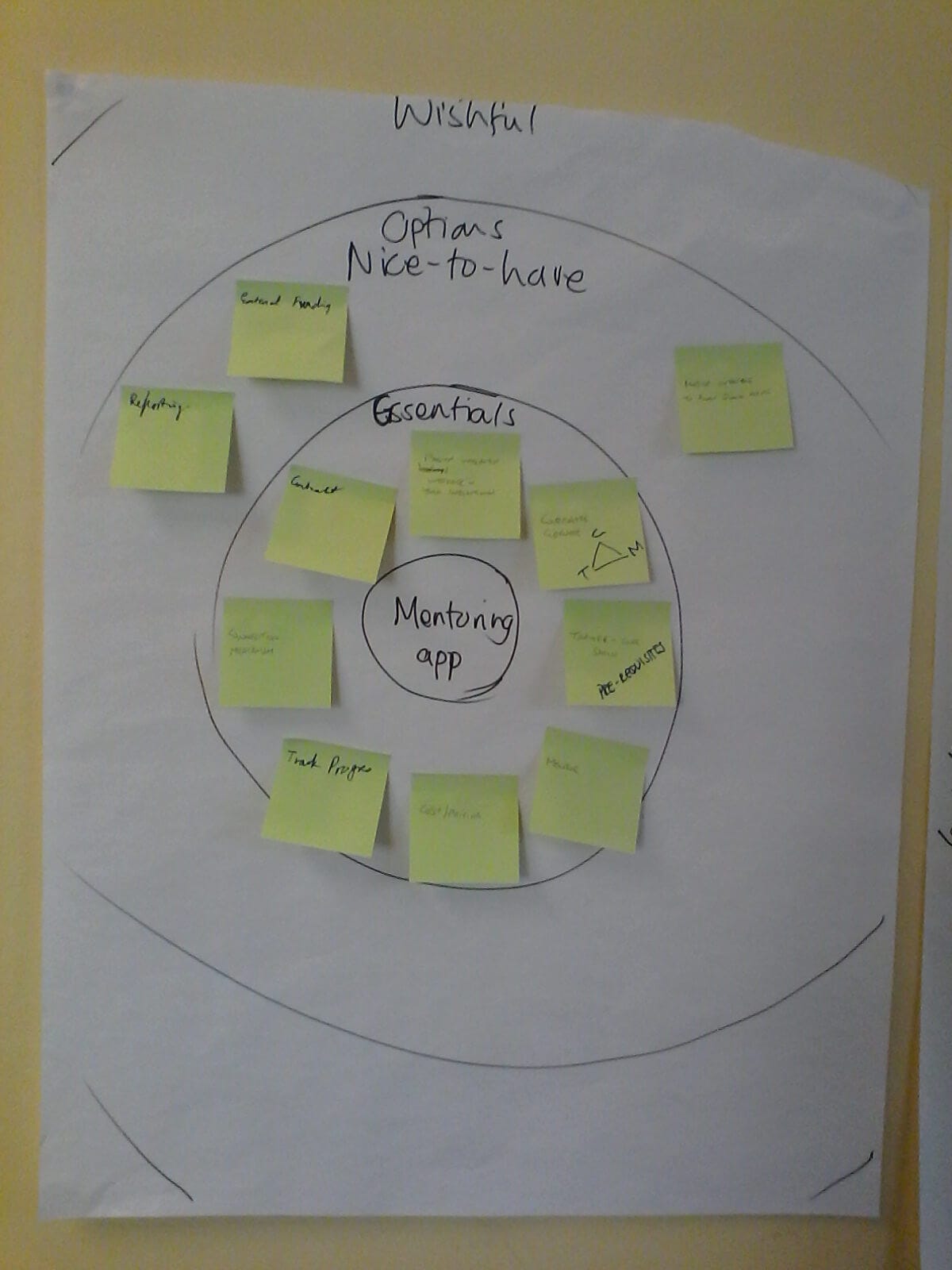
How to define an MVP in under 3 hours with Gamestorming
An experiment combining Lean Startup & Gamestorming
What happens when you throw together a bunch of strangers with only one thing in common — a desire to start a profitable business?

This was the question we asked ourselves when we planned an experimental gamestorming workshop. Our goal was to change the world of entrepreneurship from a on-man-band into a social collaboration, tapping into the collective ideas of a number of diverse skills and experience.
Using Lean Startup as framework a half-day #gamestorming workshop was planned to determine firstly what we all have in common and secondly to come up with a testable concept that we can potentially turn into a profitable business.
“What is the Lean Startup?”
The Lean Startup is all about fast failure, or the ability to adapt a product or service as fast as possible based on actual data and measurements rather than mere perception.
The goal of the workshop was to get just enough information to enable a first validation of a new idea in the market. Basically, we wanted to explore whether we have enough in common at all; and whether the resulting idea is viable before investing any time in developing the concept.
With no idea of what will come out of the session, a bunch of strangers gathered, and here is a recap of our experience and the lessons learned.
Collaborative Business Creation
The workshop was broken into 5 parts aiming to answer a few questions starting with:
“What do we have in common?”
1. Topic Generation
After connecting on a personal level over coffee and introductions we started exploring what we had in common. Each person silently wrote possible topics they are interested in on sticky notes and posted them on the whiteboard with a brief explanation to the group.
The group was instructed to find someone else interested in a similar topic and form pairs.
The first surprise of the day was that everyone was mostly interested in one of the topics posted on the board, namely developing a mentoring app suitable for social and group entrepreneurs. Who would have imagined that a bunch of people with seemingly unrelated professions all had one thing in common?
Insight #1 — While most people were influenced by the previous person’s vote, looking for the similarities between them, one person didn’t vote for any of the topics the other people posted, even though he voted last and I expected that he would choose something related. We tried to accommodate him by splitting the group to include him.
He later proved not to be a team-player at all. In retrospect it would have been better to leave him to develop his own concept (which he thoroughly enjoyed) rather than trying to accommodate him to be part of the bigger group.
Maybe inclusion is not about involving everyone?
2. Concept Generation
Using the 3–12–3 gamestorming game the pairs immediately jumped into a first attempt to come up with a rough concept of the chosen topic in under half an hour. The ideas were presented and discussed, with the groups adding critique and feedback.
We didn’t have time for a planned second round of ideation as the group suggested we give immediate feedback on the ideas, so we continued our discussion during the break over casual conversation and coffee, refining our idea.
Insight #2 — Cross-team feedback so early in the process turned out to be extremely valuable in developing the concept, even though it meant there wasn’t enough time to refine the concept in a second ideation iteration.
The conversation over coffee seemed to adequately shape the concept into something more usable without needing to drill down into the mechanics through a creative thinking exercise.
Just enough is really just enough!
3. Market Analysis
The next question that popped up after we found common ground and defined it to an acceptable level of detail was:
“Who would use it? What does value look like for this audience?”
After the break we did a quick retrospective. True to my agile value of responding to change over following a plan, I adapted the plan based on the feedback from participants. We skipped refining the product to come up with something more innovative and unique and immediately jumped into market analysis based on this rough outline of the concept.

On a grid each group mapped the potential users that might find such a product valuable, using income and usage as parameters to find the focus target market.
Each possible target group was mapped in one of the four quadrants based on their income levels and the probability of how frequently they would use the product.
The goal of the exercise was to identify a focus target market that can be observed as first phase of a bodystorming game planned for a follow up session.
Interestingly, neither of the groups selected the primary target market from the high income / high usage quadrant, which to me seemed to be the logical starting point to validate whether an idea is feasible or even wanted in the marketplace.
Insight #3 —The trend for social entrepreneurship business models more and more seems to focus on the end-users and main consumers as driver rather than the people paying for the service and making it feasible.
By focusing on solving a need for the majority of the users, who does not necessarily have a lot of money to spend on the offering, value is generated to high income users wanting access to the bigger market share.
Both Google (providing a number of apps for free in return for the information to use it for focused marketing) and LinkedIn’s business models (providing the platform for free to job seekers gathering very valuable information for recruiters who are willing to pay for this information) proved that providing potentially free services and then monetizing through a different channel can be more profitable than focusing only on the main user.
Having a primary target market in mind, we spent some time evaluating the benefits and disadvantages using the plus/delta gamestorming game to identify what value might look like for this target market. Each group offered further suggestions and critique to the other groups to bring yet another perspective to the ever-evolving concept.

4. Deciding on an MVP
With the primary target market and having a vague idea what would be perceived as valuable for this audience we played a round of the Whole Product gamestorming game to determine an MVP.
Each pair spent some time identifying the functions of the product and then mapping them according to how necessary it should be in the first iteration of a possible product.
The idea was to have a clearer understanding of what the product is going to look at and what to look for when analysing and observing users as part of the next phase of the experiment.
“Is our idea useful? Is it unique? Is it worth spending more time on it? Does it have potential in the market place?”
5. User Validation and Competitor Analysis
Each pair received homework, tasked to firstly do an initial competitor analysis to see what other apps are already available, and secondly to observe the chosen target market with the goal of testing the concept against real users.
If you’re interested in a bespoke gamestorming design to solve a specific problem, or looking for a facilitator, visit www.funficient.com to see how I can help you.
Originally published on Medium: https://medium.com/teal-times/how-to-define-an-mvp-in-under-3-hours-with-gamestorming-b3d2a7e16320
